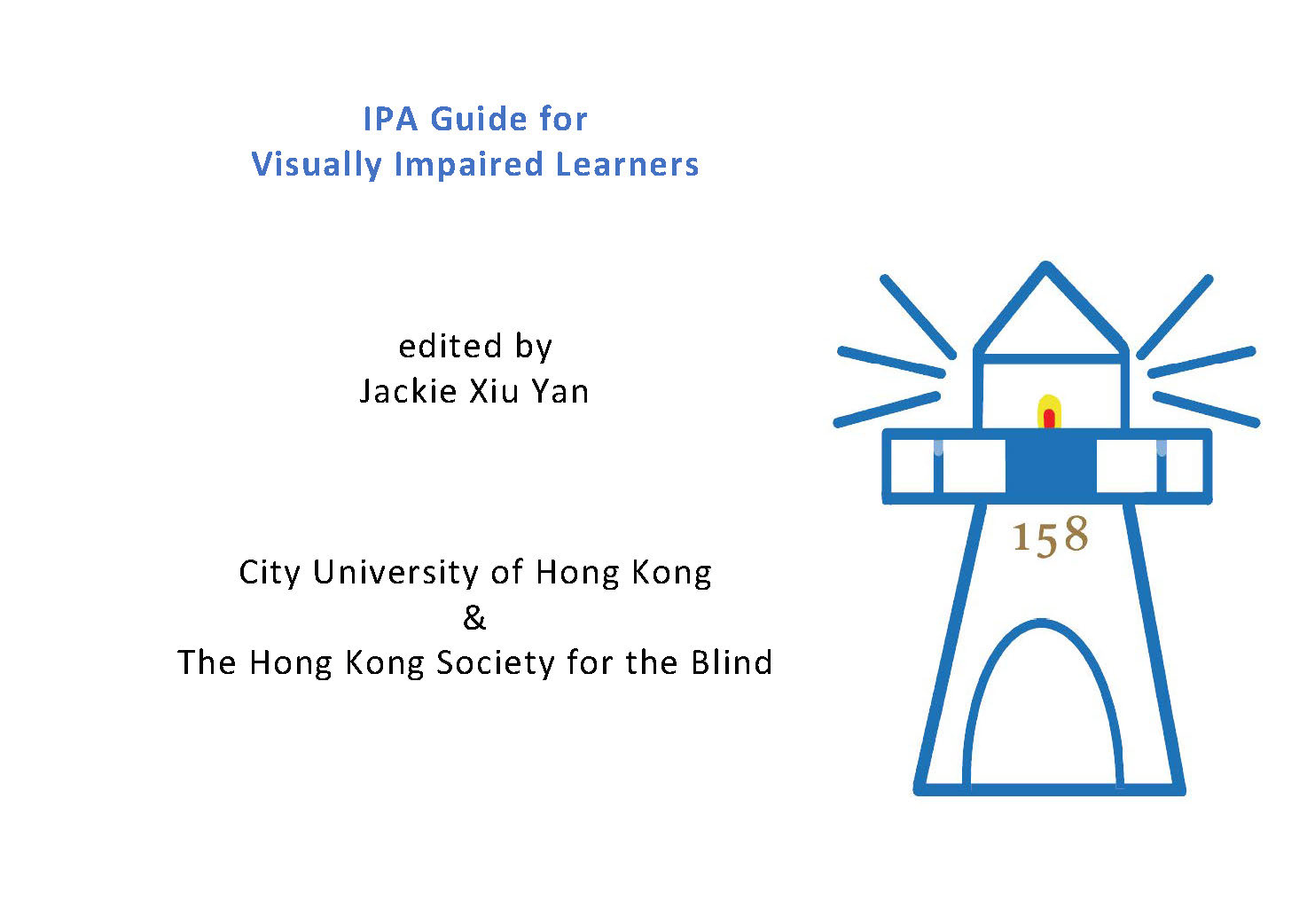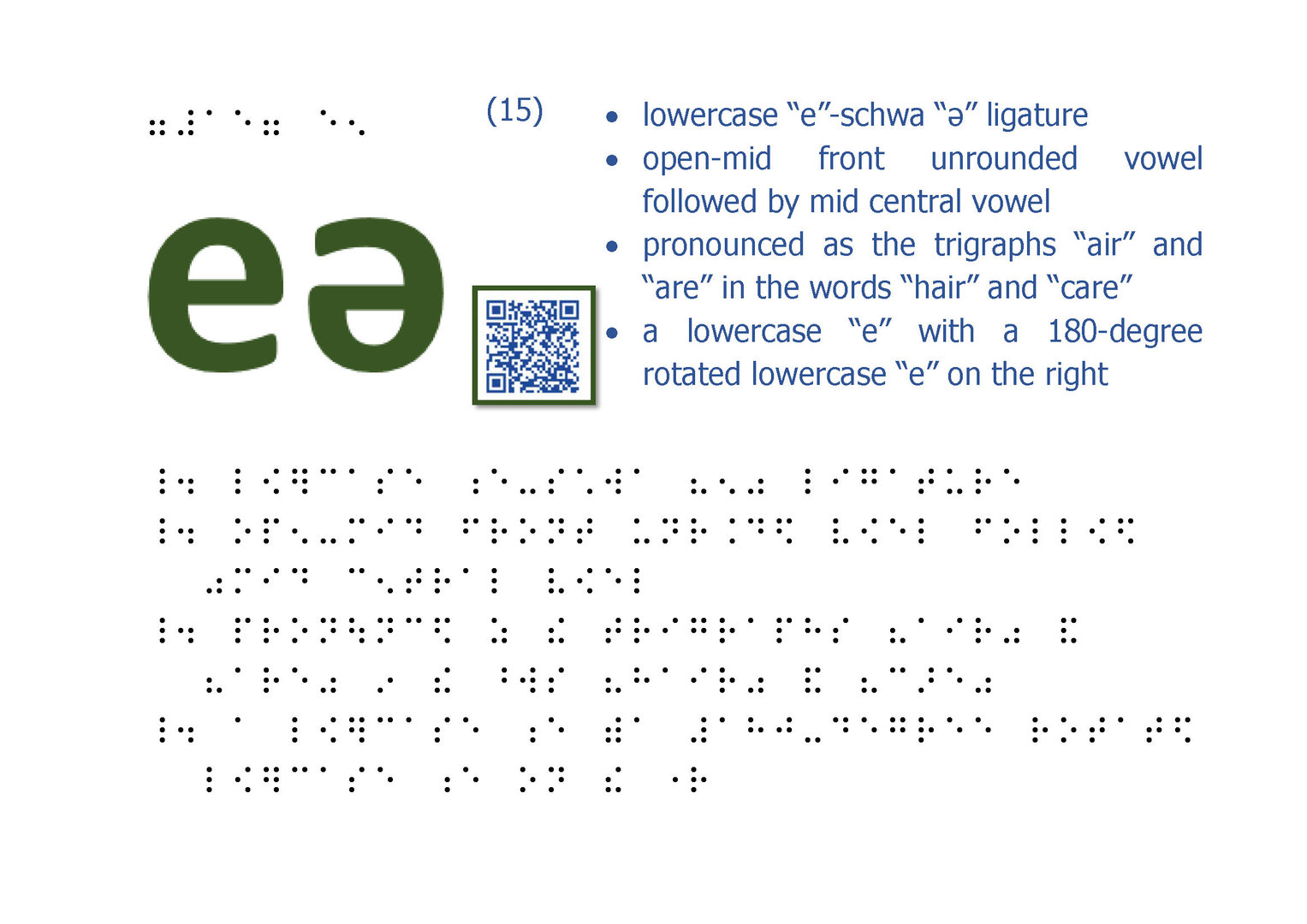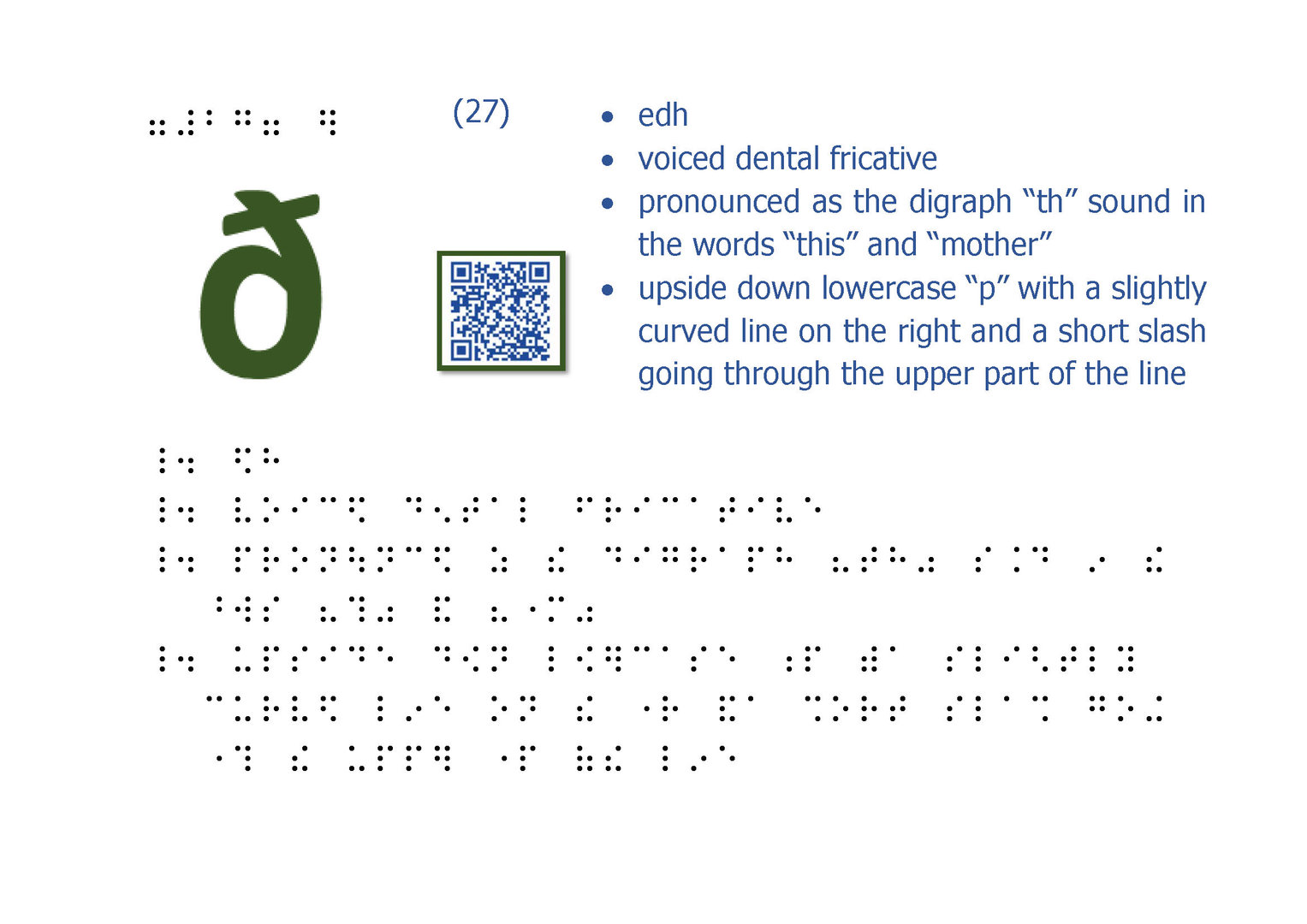

The cover page. The lighthouse is the guiding symbol of communication for both visually impaired and sighted people. Its spirit can be felt by all human hearts.
The IPA symbol “eə”: an example of how the IPA symbols are presented.
The IPA symbol “ð”: an example of how the IPA symbols are presented.
Opportunity
The International Phonetic Alphabet (IPA), a set of standardized symbols for the representation of all the possible sounds in the world’s languages, serves as the foundation for people to study phonetics and languages. The present IPA Guide for Visually Impaired Learners is developed by both visually impaired (VI ) and sighted people, facilitated by various technologies. Through collaboration, this Guide is intended to remove, to a great extent, the first obstacle for people who are visually impaired to learn IPA. Opportunities can be found for learners to study languages with the help of IPA, for sighted and VI people to work together in their research in phonetics and languages, and for developing more “barrier-free” resources in educational settings.
Technology
Various technologies were used in this IPA Guide. Firstly, the IPA symbols were printed in embossments, allowing visually impaired learners to acquire the symbols' typographic features through touching. Secondly, an audio version of the book was provided. By scanning the QR code on each page, learners can quickly access the audio of the content read by a native English speaker. Thirdly, audio description was provided for each IPA symbol to facilitate students’ learning of the typographic features of each symbol. Last but not least, Braille is provided for the main content of the guide. These technologies help make the guide accessible to the visually impaired learners, who can either listen to the audio or use Braille to acquire IPA.
Advantages
- Serving as an example/prototype for designing barrier-free educational resources of other disciplines in the future
- Providing educational resources for learners who are visually impaired to acquire knowledge about IPA
- Highlighting the possibilities of creating “inclusive” classrooms where students who are visually impaired and sighted are able to cooperate with each other more easily
- Demonstrating the importance of the cooperation between researchers and people who are visually impaired in creating barrier-free content.
- Improving public’s awareness of issues about accessibility.
Applications
- To be used in real-time classrooms for helping students who are visually impaired to learn IPA
- To be used in classrooms for improving sighted students’ awareness of the issues about accessibility.
- To be used at online platforms for visually impaired people interested in phonetics to learn IPA by themselves.
- To be put in libraries for visually impaired people’s daily study and reference purposes.
- To be used as a prototype for educators to develop barrier-free educational resources in different disciplines.






